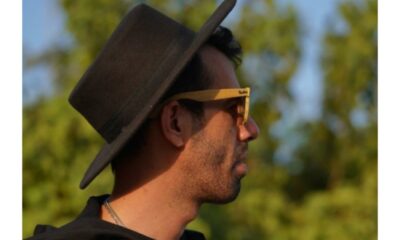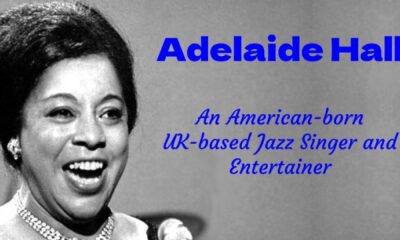Music
Getting to know Iranian music and instruments with Iranian singer and musician Amin Rezvani

As you know, instruments and means of playing music are called, it is possible that the human voice was the oldest means of music production. Early humans, before having writing and language, repeated the sounds of nature with their larynx and by blowing into the hollow trunks of trees. , hollow bones or animal horns and shells of sea creatures made different and strong sounds and used those sounds to communicate, announce danger and also create fear in the hearts of animals and the enemy, which with the passage of time and gradually these instruments It became the complete instruments of today.
Therefore, after that, all kinds of percussion instruments were introduced as musical instruments, and after all this, it can be said that wind instruments are more ancient. A piece of pierced bone belonging to the Neanderthal era has been discovered as the oldest wind structure.
It is interesting to know that Iranian musical instruments and instruments are divided into two general parts: instrumental musical instruments of Iran and musical instruments of Iranian regions. In the continuation of this part of Namanak’s culture and art, by introducing them, we will introduce you, dear audience, to the world of music.
Get to know more types of Iranian instruments
As we mentioned earlier, the instruments used in Iran are divided into two categories:
1- Instruments used in the music of Iran’s regions
2- Instruments used in Iranian instrumental music
Types of instruments used in Iranian instrumental music
chord
The string instrument includes the following components:
Skin
resonating bowl
Wire grabber
head claw
the vault
phones
the hands
Satanic
Category
The string belongs to muzrabi stringed instruments, which is made of skin, wood, bone, metal and string and is about 95 cm long. To play with this musical instrument, the musician in a sitting position places the string horizontally on his thigh and starts hitting the strings with a mallet in his hand.
This string is composed of 6 metal strings, usually the first and second strings are tuned together, the third and fourth strings are tuned together, and finally the 5th string sounds together with the first and second strings, and the sixth string is an octave bass. The first and second strings are tuned.
Setar
The three-stringed instrument also has components similar to the strings, which are as follows:
Category
the row
phones
Sin Gir
resonating bowl
the vault
head claw
the hands
Satanic
Se tar is one of the muzrabi stringed instruments, which are made of metal, wood, and nylon thread or string. You should know that before this, three tars were considered to belong to the tanbur family, but now it is closer to the tar instrument. To play this instrument, the musician in a sitting position places three strings on the thigh and moves the tips of the fingers of the left hand along the handle on the hands.
Due to the light weight of the three strings, it can be played while standing. This instrument has four metal strings of different thicknesses. It has been heard that a three-stringed dervish named Mushtaq Ali Shah added the fourth string to this instrument, and musicians know the familiar name of the fourth string of this instrument as Mushtaq.
The musical note of three strings with the key of the cell is the second line, and it goes without saying that the usual width of the sound of three strings is close to three octaves.
Dulcimer
The santor instrument consists of components such as:
the row
Satanic
Wire grabber
phones
Sound box
bridges
Vault and wire on the vault
tuning key
The santor is an isosceles trapezoidal stringed instrument made of metal and wood. This instrument is played by the musician in a sitting position, with its big side facing the player and horizontally, with two wooden mallets.
Strong woods such as betel and walnut are used in the construction of this santor. There are different definitions for the santor, but in general, a normal santor has 9 trumpets.
There are 72 wires on a centaur, 36 of which are yellow in groups of four on the 9 arches on the right, and the other 36 are white on the 9 arches on the left in groups of 4.
This instrument usually has a note more than three octaves wide, and if the fourth position is used, this width will be more.
Among the types of dulcimer, we can refer to Lacock dulcimer, chromatic dulcimer, normal cello dulcimer, bass dulcimer and chromatic bass dulcimer.
Recurrence
The following list can be mentioned from the components of the instrument:
the row
Vault and wire grabber
Category
Satanic
head claw
Bridge
phones
Berbat is one of the other Iranian musical instruments, which is called oud in Arabic. This instrument is one of the stringed muzrabi instruments, which is made of nylon or string, wood and bone. Oud is one of the old and important instruments of Iran, which consists of 10 strings that are tuned two by two in unison. be.
It has a width of nearly two octaves and its notation is done in the C key of the second line and sometimes in the F key of the fourth line.
flute
This ancient wind instrument is made of reed plant with a length of six knots and seven strings. That’s why they gave it the name seven-stringed reed. When this instrument is played, air enters through its opening and by placing the fingers on the holes and Changing the air pressure creates different sounds. The usual range of this famous instrument is approximately two and a half octaves.
The width of the reed is divided into four sound regions, which include the high voice, the low and low voice, the voice of Ghaith and the voice of Ghaith.
Scissors
The main components and constituents of the qichak instrument:
Category
Skin
phones
Bowl
head claw
Wire grabber
Satanic
the vault
Another stringed instrument is qichak, which is one of the bowed instruments, and metal, wood and leather are used in its construction. The way of playing this instrument is similar to the fiddle and it is used in the music of different parts of our country, Iran. It is approximately 56 cm long, the stitching of the third and fourth strings of the scissors can be changed in different positions, and the stitching of the strings of the ordinary scissors is in the form of descending fifths.
Its sound range is about 2 octaves, and due to the lack of manuals, it can be performed in all intervals of Iranian national music. The notation of the alto and normal qichak is by the second line of treble clef and the fourth line of the open qichak with the key of F.
Scissors
Types of Iranian musical instruments and their components
law maker
The law maker consists of components such as:
Skin
phones
Wire grabber
Bridge
Goofs
turn the curtain
tuning key
the vault
the row
Satanic
Saz Qunun is one of those Iranian stringed musical instruments which is a right-angled trapezoid made of skin, wood, bone, metal and strings. The method of playing this instrument by the musician is in a position where the larger side is on the table or the musician’s leg and is towards him, and it is played with two index fingers of the left and right hand equipped with a mallet.
It usually consists of coated silk or nylon, 82 strings made of strings, which are used in the bass part, coated metal strings, and most of them are in tune with each other in the bass part, single or double in groups of three. are tuned
The sound of the law in Iran is approximately three octane in size, and its notation is done on two carriers, for approximately one octave of bass sounds, it is done with the F key of the fourth line and the rest with the C key of the second line.
Def, circle, bell circle
Components of def
you washed
rings
stud
Bounce
Skin
Another percussion instrument is called daf, which is made using leather, wood, and metal. Its body is in the shape of a circle and has an opening with a diameter of 60 cm. At certain intervals, metal rings are embedded along the inner wall of the tambourine.
Def’s family members
Circle: The circle is a chamber type and smaller than the def.
Bell ring: This circular tool has a wooden bow that has slits along the wall of the bell and at a close distance, and small double gauges are placed inside them.
And many other instruments that cannot be included in this conversation
-

 Sports4 weeks ago
Sports4 weeks agoFIFA Club World Cup 2025: Complete List of Qualified Teams and Groups
-

 Sports3 weeks ago
Sports3 weeks agoAl Ahly vs Inter Miami, 2025 FIFA Club World Cup – Preview, Prediction, Predicted Lineups and How to Watch
-
Health1 week ago
Back to Roots: Ayurveda Offers Natural Cure for Common Hair Woes
-

 Tech2 weeks ago
Tech2 weeks agoFrom Soil to Silicon: The Rise of Agriculture AI and Drone Innovations in 2025
-

 Sports3 weeks ago
Sports3 weeks agoFIVB Men’s Volleyball Nations League 2025: Full Schedule, Fixtures, Format, Teams, Pools and How to Watch
-

 Science4 weeks ago
Science4 weeks agoEverything You Need to Know about Skywatching in June 2025: Full Moon, New Moon, Arietid Meteors, and Planetary Marvels
-

 Startup3 weeks ago
Startup3 weeks agoHow Instagram Is Driving Global Social Media Marketing Trends
-

 Television4 weeks ago
Television4 weeks agoTribeca Festival 2025: Date, Time, Lineups, Performances, Tickets and How to Watch























